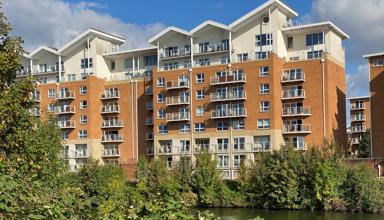The Welsh Government recently confirmed it would introduce a Building Safety Bill before the summer recess.
Its introduction will aim to deliver on a Programme for Government commitment to reform the current system of building safety. It will also aim to fulfil a long-standing pledge by the Welsh Government to address the regulatory failures which contributed to the fire in Grenfell Tower on 14 June 2017, which claimed the lives of 72 people.
This article explores the background to the proposed reforms, what changes have been implemented so far, and what we might expect from the upcoming Bill.
Background
In the wake of the Grenfell Tower tragedy, the UK government commissioned a review of building regulations and fire safety to make recommendations on a future regulatory system.
Known as the Hackitt review, it found the existing system covering high-rise and complex buildings was not fit for purpose. It identified a number of significant failures, including what it said were:
- Unclear roles and responsibilities amongst those procuring, designing, constructing and maintaining buildings;
- Ambiguity or inconsistency in regulations and guidance;
- Weak and complex processes to drive compliance, as well as poor record keeping and change control;
- Patchy levels of competence across the sector;
- An opaque and insufficient regime for testing, labelling and marketing building products; and
- A system where the voices of residents often go unheard.
The review emphasised the need for a coherent regulatory framework operating across the whole life cycle of a building. It recommended a series of changes which would broadly apply during two different phases:
- During the design, construction and refurbishment of a high-risk building. These changes focused on introducing clear responsibilities and accountabilities, and a more robust system of oversight.
- Whilst the building is occupied. This included measures to ensure that residents are heard, and that building safety and fire safety risks are proactively managed.
In May 2018, the Welsh Government committed to making “the radical and far-reaching reforms to the regulatory system” that were called for in the Hackitt review. It convened a Building Safety Expert Group which published a road map in March 2019, setting out how to take forward changes in Wales.
In January 2021, Welsh Government then published the Safer Buildings in Wales White Paper outlining proposals to reform building safety.
Changes to the design and construction phase
Many of the legal changes identified in the White Paper relating to the design and construction phase have already been taken forward through the UK Government’s Building Safety Act 2022. The Welsh Government had argued that this approach allowed for reforms to be enacted as quickly as possible.
Some measures in that Act, largely related to the registration and regulation of the building control profession, have already been implemented in Wales. Others will be introduced at a later stage through secondary legislation.
The Welsh Government recently consulted on the next phase of its building safety reforms. Within that consultation, the proposed regulatory framework for the design and construction phase largely aligns with the approach taken in England. The consultation is proposing to:
- introduce new responsibilities and competencies for duty holders
- require duty holders to keep a ‘Golden Thread’ record of building information
- require new high-risk buildings to pass through three ‘Gateway’ points at planning, building control, and completion stages;
- establish a mandatory occurrence reporting system for building safety incidents and risks; and
- give building control authorities more enforcement powers.
There are some areas in which approaches in England and Wales have diverged. The UK Government has created the Building Safety Regulator (BSR), a new independent body within the Health and Safety Executive (HSE), to oversee the new regime and act as the building control authority for higher-risk buildings. In Wales, any new work on higher-risk buildings must now be overseen by local authorities. The Welsh Government has also set its own definition of “higher-risk” buildings which differs slightly to that in England.
In 2023, Audit Wales explored how the Welsh Government, local authorities and their partners were implementing the requirements of the Building Safety Act 2022. At that time, it concluded that responsible bodies, particularly local authorities and fire and rescue services, were “unable to effectively discharge their responsibilities and ensure buildings in Wales are safe”.
The Welsh Government has taken action in a number of areas in response to recommendations from both Audit Wales and the Public Accounts and Public Administration Committee on this issue.
Changes to the occupation phase
The Bill is expected to introduce a new building safety regime which will cover the occupation and ongoing management of multi-occupied residential buildings. It is expected to create new Accountable Person roles, with statutory responsibilities to assess and manage building safety risks. It is also likely to introduce new fire safety provisions for residential buildings, and make provision for residents to have a stronger voice in building safety matters.
Propertymark has noted that the Welsh Government’s proposals for the Building Safety Regime represent “a considerably different approach to what has been taken in England” in relation to the occupation phase.
One of the key differences is the scope of the regime. The Cabinet Secretary for Housing and Local Government has confirmed it will cover all residential buildings with two or more dwellings (with some exceptions), regardless of their height. Buildings will be separated into different categories, with more requirements placed on Accountable Persons for buildings in a higher risk category. During the White Paper consultation, most respondents agreed with the proposed scope of the regime, though some felt it could result in requirements for some buildings being disproportionate to the level of risk.
Another difference between England and Wales relates to the regulation and enforcement of the regime. The Welsh Government has confirmed that local authorities will be responsible for regulating the building safety regime for occupied buildings, working closely with Fire and Rescue Authorities. In England, the occupation regime is regulated by the Building Safety Regulator.
Finally, the Bill is expected to introduce new fire safety provisions. In its response to the White Paper consultation, the Welsh Government argued that the existing process for fire risk assessments in residential buildings is not fit for purpose. The White Paper set out proposals for a new structure for these assessments, which were largely supported by those responding to the consultation.
What happens next?
Once it is introduced, the Building Safety Bill will be subject to the usual Senedd legislative process.
Senedd Research will be publishing more information on our Bill Resources page as the Bill progresses through the stages of scrutiny.
Article by Gwennan Hardy, Senedd Research, Welsh Parliament






